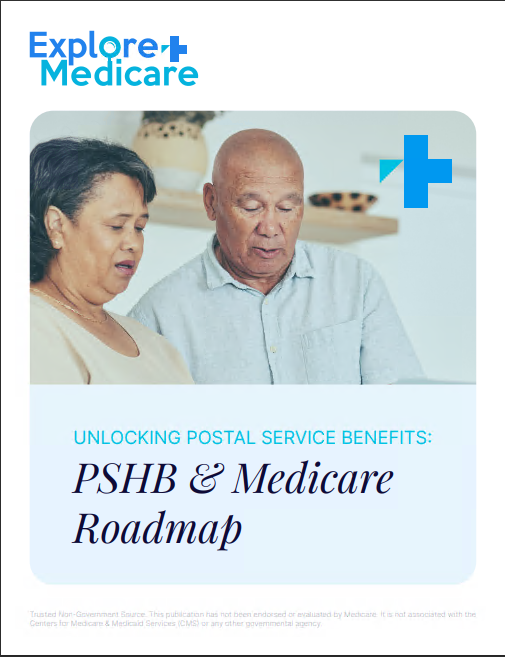Key Takeaways
-
Medicare Part D coverage operates in multiple phases, and understanding these layers can help you avoid surprise costs and make better decisions about your prescriptions.
-
In 2025, key updates include the elimination of the coverage gap and the introduction of a $2,000 out-of-pocket maximum, making it more important than ever to understand how each phase works.
What You Think You Know About Medicare Part D—And What You Might Be Missing
At first glance, Medicare Part D seems like it should be simple. It helps you pay for prescription drugs. But dig a little deeper, and you’ll find that Part D is structured around several cost-sharing phases. These stages—each with their own rules and financial thresholds—can have a serious impact on how much you pay out of pocket over the course of a year.
Understanding these phases is essential to avoid unexpected expenses and to make informed decisions during enrollment periods.
The Four Layers of Part D Coverage in 2025
Medicare Part D operates through four distinct phases. Each one reflects a different stage of your annual drug spending.
1. The Deductible Phase
In 2025, the maximum deductible for Medicare Part D is $590. This is the amount you’re responsible for paying out-of-pocket before your plan begins to share in the cost of your prescriptions.
-
Not all Part D plans charge the full deductible.
-
Some drugs may be exempt from the deductible depending on the plan’s design.
You remain in this phase until your total out-of-pocket spending equals the deductible amount.
2. The Initial Coverage Phase
Once your deductible is met, you enter the initial coverage phase. Here, your Part D plan starts to share the cost of your prescriptions.
-
You typically pay a copayment or coinsurance based on the drug’s tier.
-
Your plan pays the rest.
This phase continues until the combined amount you and your plan have spent on covered drugs reaches $5,030 in 2025.
3. The Catastrophic Coverage Phase (Now Reached Sooner)
In 2025, the coverage gap (or “donut hole”) has been eliminated. Previously, this was a phase where your out-of-pocket costs spiked, but now there’s a more direct path to cost relief.
Once your out-of-pocket costs reach $2,000, you enter what’s now referred to as the catastrophic coverage phase. This change streamlines your coverage experience and reduces your maximum financial burden.
-
You no longer pay a percentage of drug costs beyond this point.
-
Your plan covers 100% of covered prescription costs for the rest of the year.
This update is a significant improvement for those who rely on high-cost medications.
What Counts Toward the $2,000 Cap?
Understanding what does and doesn’t count toward your out-of-pocket maximum is critical. The following expenses do count:
-
Your deductible
-
Copayments and coinsurance in the initial coverage phase
-
Any payments made through the Medicare Prescription Payment Plan (if enrolled)
-
Payments made by others on your behalf (excluding other insurance plans)
However, monthly premiums do not count toward the cap. Neither do payments made by your plan.
The Medicare Prescription Payment Plan (New in 2025)
For the first time in 2025, you can opt to spread your out-of-pocket drug costs across the calendar year through the Medicare Prescription Payment Plan.
This can be especially helpful if your medication costs are concentrated early in the year. Instead of large upfront bills, you pay monthly installments.
-
Participation is voluntary
-
No interest is charged
-
You must actively opt in
This option offers greater predictability and can reduce financial stress.
What to Watch For When Choosing a Part D Plan
Even with the new protections in place, Part D plans are not all the same. Choosing the right plan still requires careful comparison.
Drug Formularies
Each Part D plan maintains its own list of covered drugs—known as a formulary. Drugs are divided into tiers, with each tier having a different cost-sharing structure.
-
Generic drugs are typically placed in lower tiers.
-
Brand-name or specialty drugs may be placed in higher tiers with higher copays or coinsurance.
Make sure your medications are on your plan’s formulary, and check which tier they fall into.
Pharmacy Networks
Plans may offer lower prices at preferred pharmacies. Using out-of-network pharmacies could mean you pay more or your drug isn’t covered at all.
-
Confirm your preferred pharmacy is in-network
-
Look for mail-order options if available
Utilization Management Rules
Some Part D plans use utilization rules like prior authorization, quantity limits, or step therapy. These rules can delay access to medications or require extra paperwork.
Understanding these restrictions before enrolling can help avoid treatment interruptions.
Timing Matters: Enrollment Periods and Changes
Timing is everything when it comes to Medicare. You can’t make changes to your Part D plan whenever you like. The main timeframes to keep in mind are:
Initial Enrollment Period (IEP)
-
Starts 3 months before your 65th birthday, includes your birth month, and extends 3 months after.
-
If you’re newly eligible for Medicare, this is your first chance to enroll in a Part D plan.
Annual Enrollment Period (AEP)
-
Runs from October 15 to December 7 each year
-
You can change, drop, or join a new Part D plan
-
Changes take effect on January 1 of the following year
Medicare Advantage Open Enrollment Period
-
January 1 to March 31
-
If enrolled in a Medicare Advantage plan, you can switch to a different Advantage plan or return to Original Medicare and join a Part D plan
Special Enrollment Periods (SEPs)
You may qualify for a Special Enrollment Period if:
-
You move out of your plan’s service area
-
You lose other creditable drug coverage
-
You enter or leave a long-term care facility
SEPs vary in length and eligibility requirements, so it’s essential to act promptly.
Why It’s Not Just About Medications
It’s easy to think of Medicare Part D as simply helping with your prescriptions—but the implications go far beyond the pharmacy counter.
-
If you skip Part D and later decide you need it, you could face a lifetime late enrollment penalty.
-
Choosing a poor-fitting plan could mean missing out on needed drugs or paying more than necessary.
-
Part D coverage can impact your ability to coordinate benefits with other insurance, such as retiree plans or Medicaid.
These reasons make it crucial to treat Part D as a core part of your overall Medicare strategy—not an afterthought.
Key Questions to Ask Before Enrolling
Before selecting a Part D plan, it’s wise to ask yourself:
-
Are my medications on the plan’s formulary?
-
What are my expected annual out-of-pocket costs?
-
Does the plan include my preferred pharmacy?
-
Are there restrictions like prior authorization or quantity limits?
-
Can I benefit from the Medicare Prescription Payment Plan?
Taking the time to ask these questions now can help you avoid financial surprises later.
Layers You Can’t Afford to Overlook
The complexity of Medicare Part D lies in its structure—but that same structure offers protections and options if you understand how it works. With the 2025 improvements, you have more tools than ever to reduce your out-of-pocket costs and get consistent access to the medications you need.
If you’re unsure about your next step, speak with a licensed insurance agent listed on this website. They can help you compare plans and find coverage that fits your health needs and budget.









